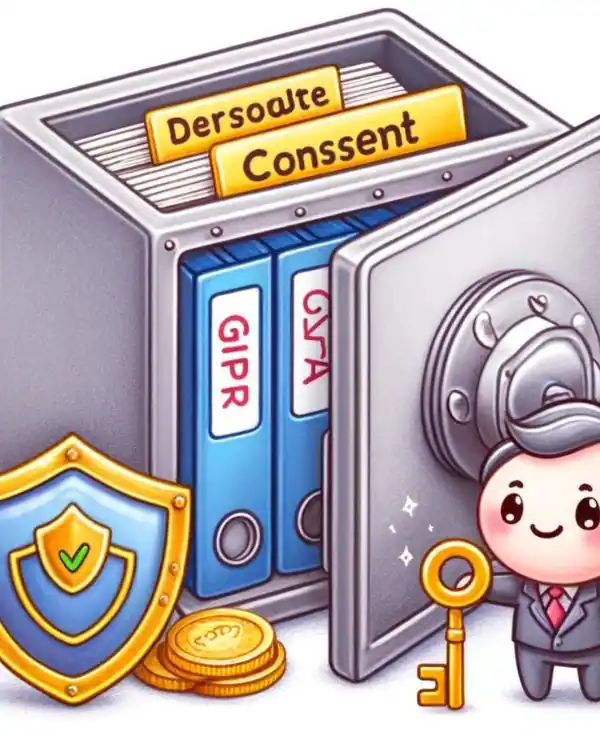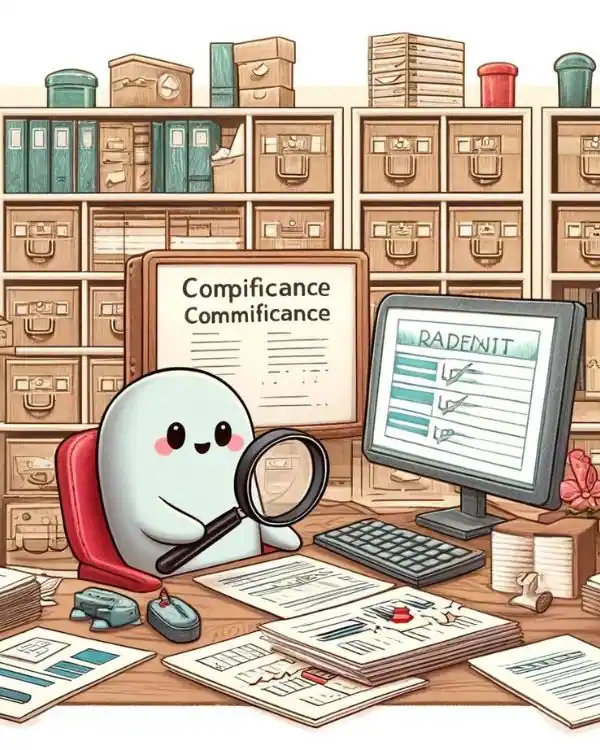Advertisement
By IS Team
How To Create Legally Compliant Corporate Invitations: A Step-by-Step Guide

Advertisement
Navigating the complexities of Corporate Invitation Compliance and Legal Considerations is essential for any business engaging in digital communications. This guide ensures that your corporate invitations not only captivate but also comply with strict legal standards, from data privacy to anti-spam laws. By adhering to these guidelines, you cultivate trust and uphold your company's reputation, making every digital interaction both meaningful and compliant. Let’s embark on this compliance journey together, ensuring your communications are as impactful as they are impeccable! 🌟
Understanding Compliance in Digital Communication
When discussing compliance in digital communication, we refer to legal and ethical standards governing corporate digital interactions. Compliance is essential for maintaining your company's integrity and trustworthiness. Here’s why it’s crucial:
Legal and Ethical Obligations
Compliance ensures that your digital messages meet laws protecting privacy, preventing fraud, and securing transparent communication. Adhering to these laws, such as GDPR, HIPAA, or the CAN-SPAM Act, is mandatory to avoid fines and legal disputes.
Building Trust
Compliance isn’t just about avoiding penalties; it’s about fostering trust. When your communications adhere to legal standards, customers view your business as reliable and secure. 🔒
Key Practices for Compliance:
- Regular Training: Keep your team updated on compliance requirements.
- Audits and Monitoring: Regularly review your communication practices to ensure adherence to legal standards.
- Transparent Policies: Maintain clear data collection, usage, and storage policies.
Data Privacy and Protection

In the digital landscape, data privacy stands as a cornerstone of trust and compliance. Regulations like the General Data Protection Regulation (GDPR) and the California Consumer Privacy Act (CCPA) provide strict guidelines on how businesses should handle personal information. To ensure your company excels in data management, follow these key principles:
Collect Wisely
Only gather data that is essential for your operations. Excessive data collection not only burdens your storage solutions but can also increase liability under privacy laws. Be strategic and minimize the data you collect—more isn't always better.
Store Securely
Once data is collected, the next crucial step is secure storage. Implement robust security measures such as encryption, secure access controls, and regular security audits to protect personal information against breaches and unauthorized access.
Consent is Key
Transparency and consent are non-negotiable. Always obtain explicit consent from individuals before collecting or using their data. Make sure that the consent process is clear and provides information on how their data will be used. This is not only a legal requirement but also a practice that reinforces trust.
Regular Updates and Compliance Checks
Data privacy laws are continuously evolving. Keep your policies and practices up-to-date by conducting regular compliance checks and updating your processes as needed. This proactive approach helps avoid penalties and ensures ongoing trust with your customers.
Anti-Spam Laws

In an era where inboxes are often flooded with unwanted emails, compliance with anti-spam laws like the CAN-SPAM Act in the U.S. and Canada's Anti-Spam Legislation (CASL) is crucial for any business using digital communications. Adhering to these laws not only keeps you legally compliant but also enhances the receptivity and effectiveness of your communications. Here’s how you can ensure your digital invitations are both welcomed and compliant:
Easy Unsubscribe Option
Provide a clear and straightforward unsubscribe mechanism in every communication. This option should be easy to find and simple to use, allowing recipients to opt out of future emails swiftly and without hassle. Ensuring this process is user-friendly respects recipient preferences and complies with anti-spam regulations.
Clear Identification of the Sender
Transparency is key in digital communications. Identify your organization in every email. This includes using your legal business name and contact information. Transparency not only builds trust but also ensures that your communications are not mistaken for spam.
Consent Management
Ensure that you have obtained prior consent to send communications, which is a cornerstone of both the CAN-SPAM Act and CASL. Keep records of how and when consent was obtained, and respect the users' wishes regarding the type of content they agreed to receive.
Honest Subject Lines
Avoid misleading subject lines. Ensure that the content of the email is accurately reflected in the subject line, preventing any potential misunderstandings or accusations of deceptive practices.
Intellectual Property Rights

Respecting intellectual property rights is crucial when creating and sending digital invitations. Here’s how to ensure your content is legally compliant and ethically sourced:
Use Authorized Content: Only use images, logos, and other content for which you have explicit rights or have licensed from the rightful owners.
Seek Permission: If unsure about the ownership or usage rights of any content, always seek permission from the copyright holder. This not only avoids legal issues but also respects the creators' rights.
Credit the Source: When using content under Creative Commons or other licenses that require attribution, always credit the source according to the specified guidelines.
Avoid Copyright Infringement: Be vigilant in ensuring that none of the content you use infringes on the copyrights of others. This includes music, video, and any text not originally written by your team.
Document Permissions and Licenses: Keep a record of all permissions and licenses for the content you use. This documentation can be vital in defending your use of the material in a dispute.
By following these guidelines, you protect your brand from legal risks and contribute to a culture of respect for intellectual property.
Accessibility Standards

Accessibility is a fundamental aspect of digital communication, ensuring that everyone, regardless of their abilities, can access and interact with your content. Here's how to make your digital invitations inclusive and compliant with standards such as the Americans with Disabilities Act (ADA) and the Web Content Accessibility Guidelines (WCAG):
Readable Fonts: Use fonts that are easy to read and of sufficient size. This helps individuals with visual impairments to better understand your invitations.
Sufficient Color Contrast: Ensure that there is high contrast between text and background colors. This not only aids readability for those with visual impairments but also enhances the overall user experience.
Alt Text for Images: Provide alternative text (alt text) for images. This descriptive text helps users who rely on screen readers to understand the content of the images.
Keyboard Navigability: Ensure that all parts of the invitation can be navigated using a keyboard alone. This is crucial for individuals who cannot use a mouse.
Caption and Audio Descriptions: Include captions for any videos in your invitations and audio descriptions where necessary. This makes your content accessible to users with hearing impairments.
Clear and Simple Language: Use clear and simple language to communicate your message. Avoid complex jargon that can be difficult to understand, particularly for those with cognitive disabilities.
Compliance with Industry-Specific Regulations
Navigating industry-specific regulations is crucial for ensuring your digital invitations are both effective and compliant. Here's how to align your communications with sector-specific rules:
Understand Specific Regulations: Familiarize yourself with the regulations relevant to your industry, such as the Sarbanes-Oxley Act for finance or HIPAA for healthcare.
Tailor Your Content: Adapt your invitations to meet these specific legal requirements, which may include stringent data security measures or necessary disclosures.
Regular Training: Conduct regular training to keep your team informed about compliance standards and updates in your industry.
Audit and Review: Periodically audit your communications to ensure adherence to industry regulations.
Consult Experts: Seek advice from legal experts in your industry to guide compliance efforts and avoid legal pitfalls.
Record Keeping and Compliance Audits

Effective record-keeping is essential for navigating compliance audits smoothly and managing your data responsibly. Here’s how to ensure your documentation supports both compliance and operational efficiency:
Maintain Detailed Records: Keep comprehensive logs of all digital invitations and communications. This includes data on when communications were sent, who received them, and any responses or interactions.
Organize Documentation: Organize your records in a manner that makes them easily accessible and auditable. This organization is crucial for quick retrieval during audits.
Regular Reviews: Periodically review your records to ensure they are complete and accurate. Regular checks help identify and rectify discrepancies early.
Secure Storage: Ensure that all records are stored securely to prevent unauthorized access or data breaches, which could compromise compliance.
Prepare for Audits: Use your well-maintained records to demonstrate compliance during audits. Being prepared with clear, organized documentation can significantly ease the audit process.
Frequently Asked Questions
Q1. What are the consequences of non-compliance with digital invitation laws?
Non-compliance can lead to serious penalties including fines, legal action, and damage to your company’s reputation. Ensuring adherence to laws and regulations protects your business from these risks.
Q2. How often should compliance policies for digital invitations be reviewed?
Compliance policies should be reviewed at least annually or whenever significant regulatory changes occur. This helps ensure that your practices remain up-to-date with current laws.
Q3. Can using a digital invitation service help in achieving compliance?
Yes, many digital invitation services are designed with compliance in mind, offering features like built-in consent forms, data encryption, and easy unsubscribe options which can aid in maintaining legal compliance.
Q4. What should be included in a compliance audit for digital invitations?
A compliance audit should include a review of the data collection methods, consent records, security measures, and how well the digital invitations adhere to industry-specific regulations and general legal standards.
Conclusion
Navigating corporate invitation compliance and legal considerations can seem complex, but with the right knowledge and tools, it’s perfectly manageable. Use this guide to keep your communications both impactful and compliant, ensuring your corporate messages resonate with respect and responsibility. Ready to send out that next invitation with confidence?
Advertisement
I'm Looking For!




.png)
.png)
.png)

